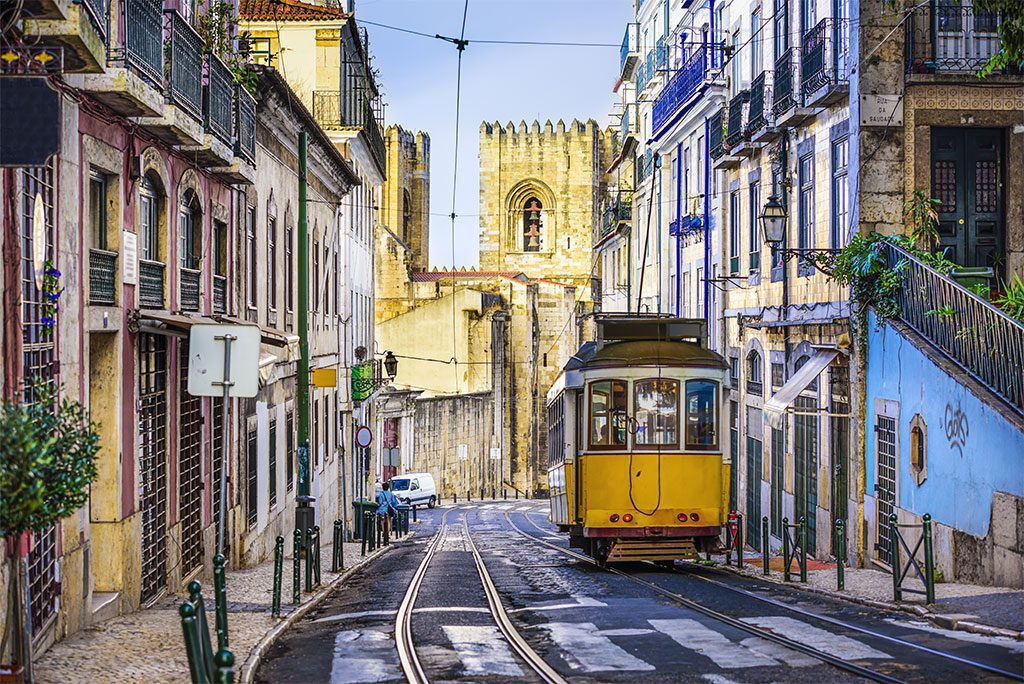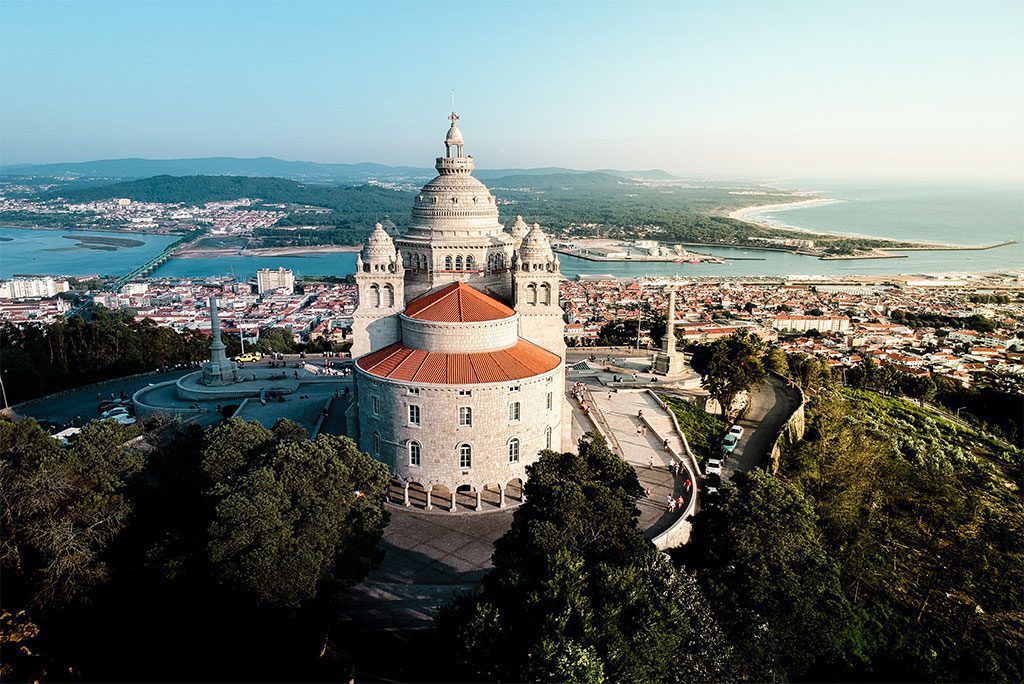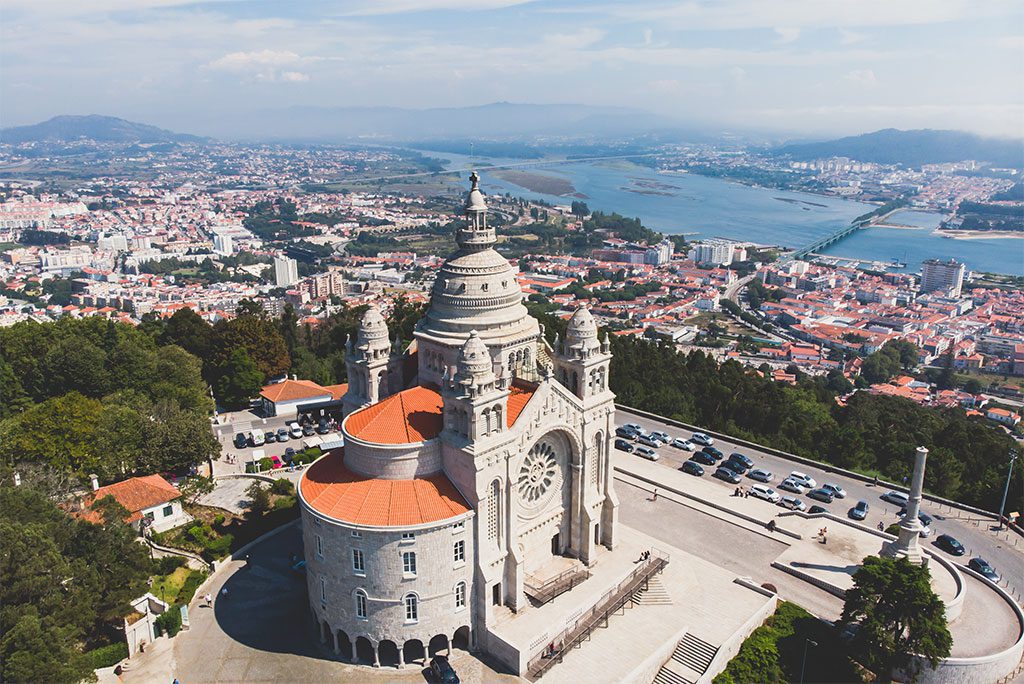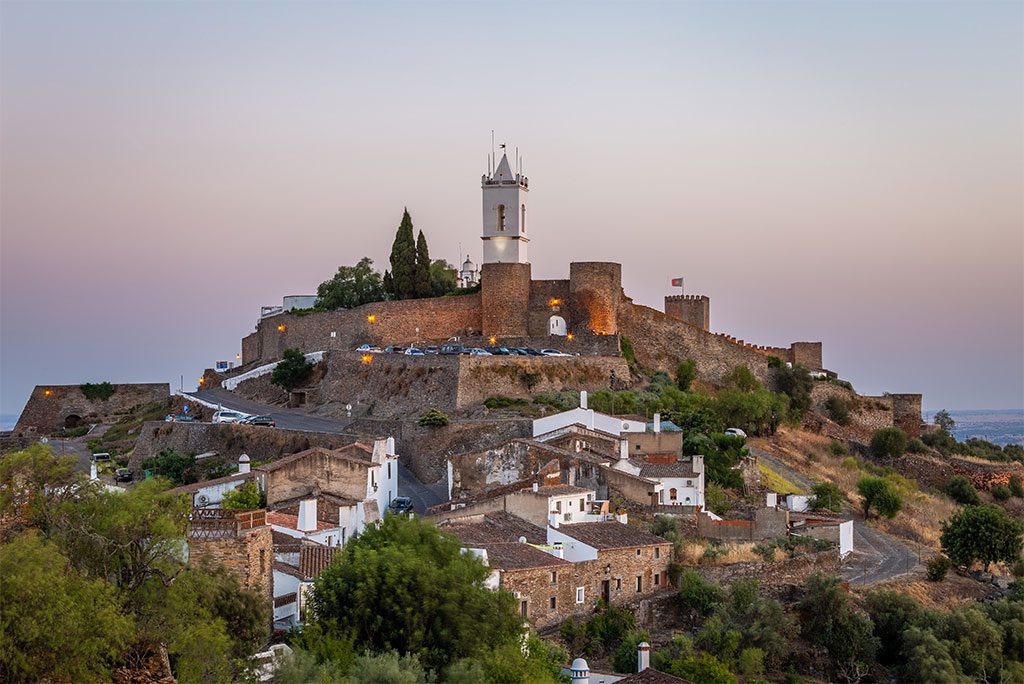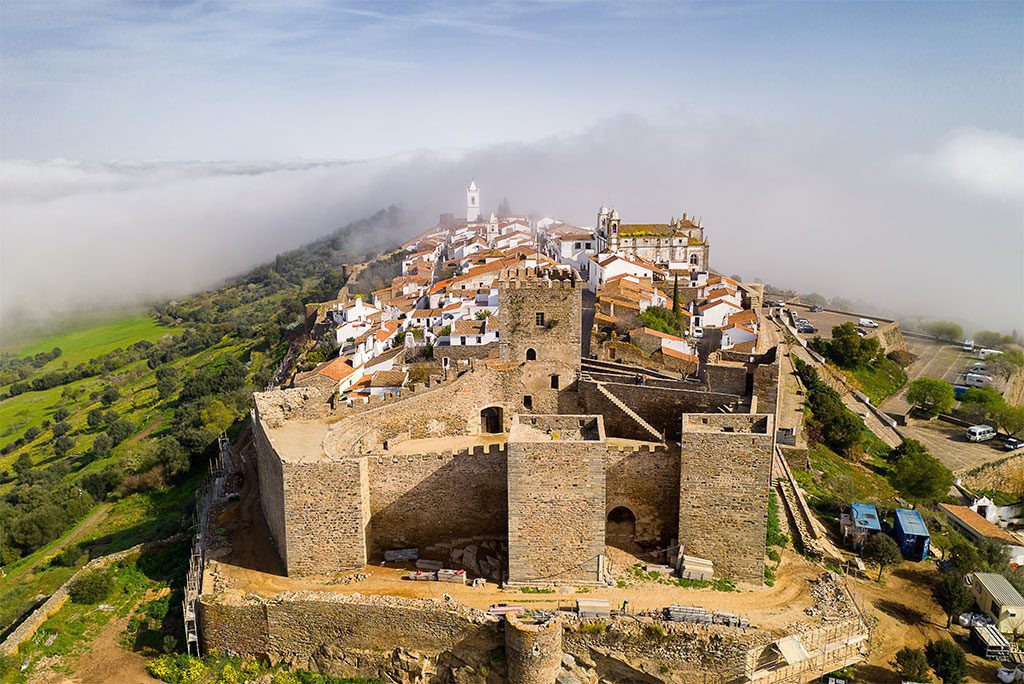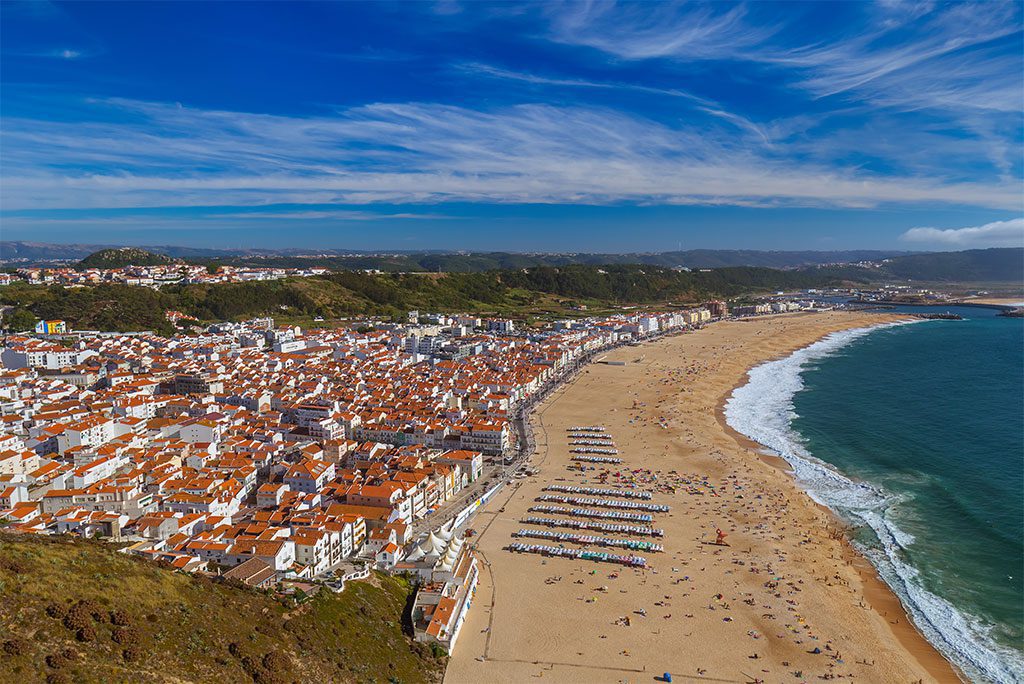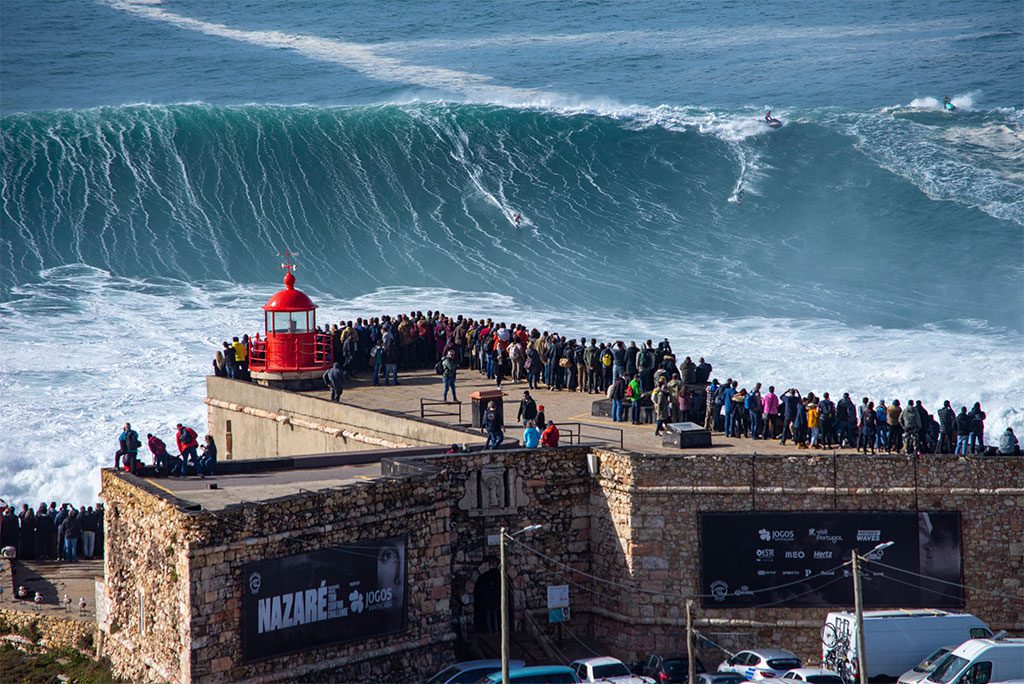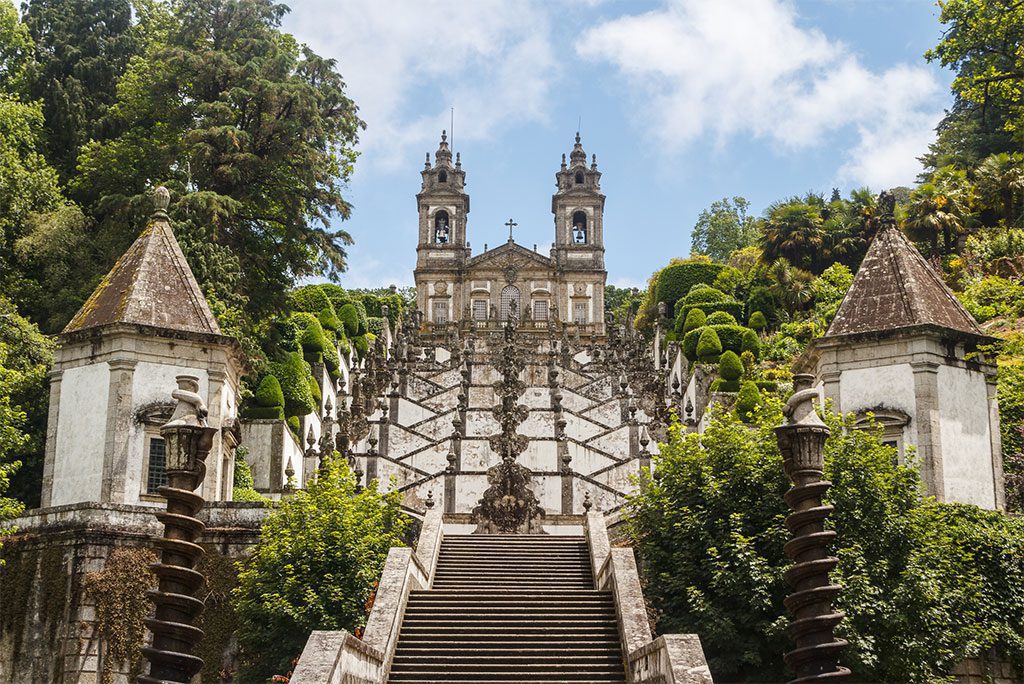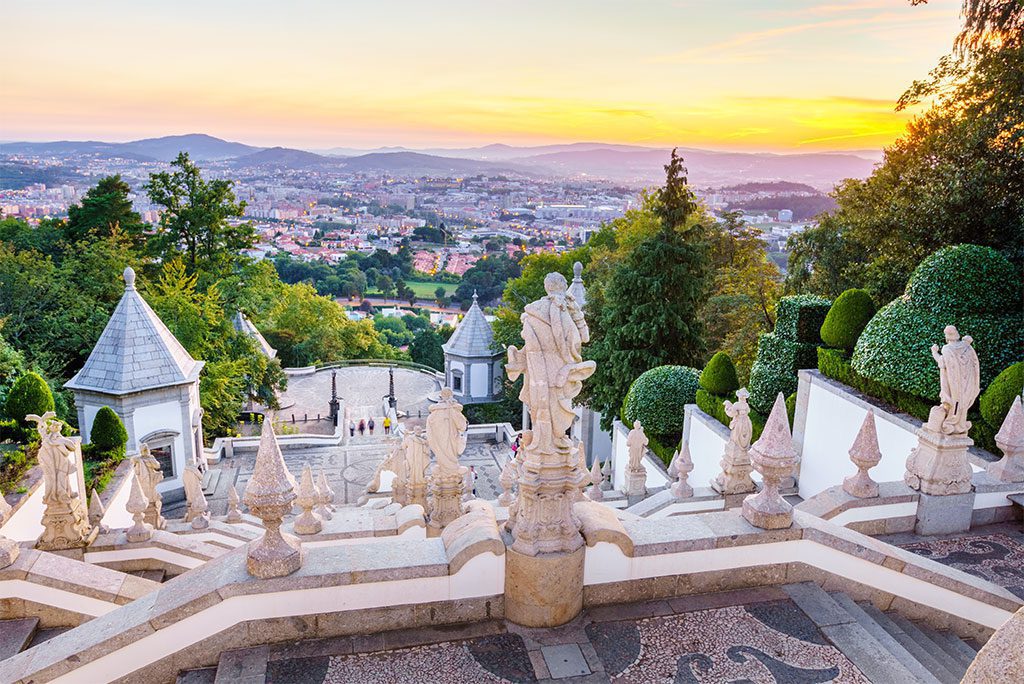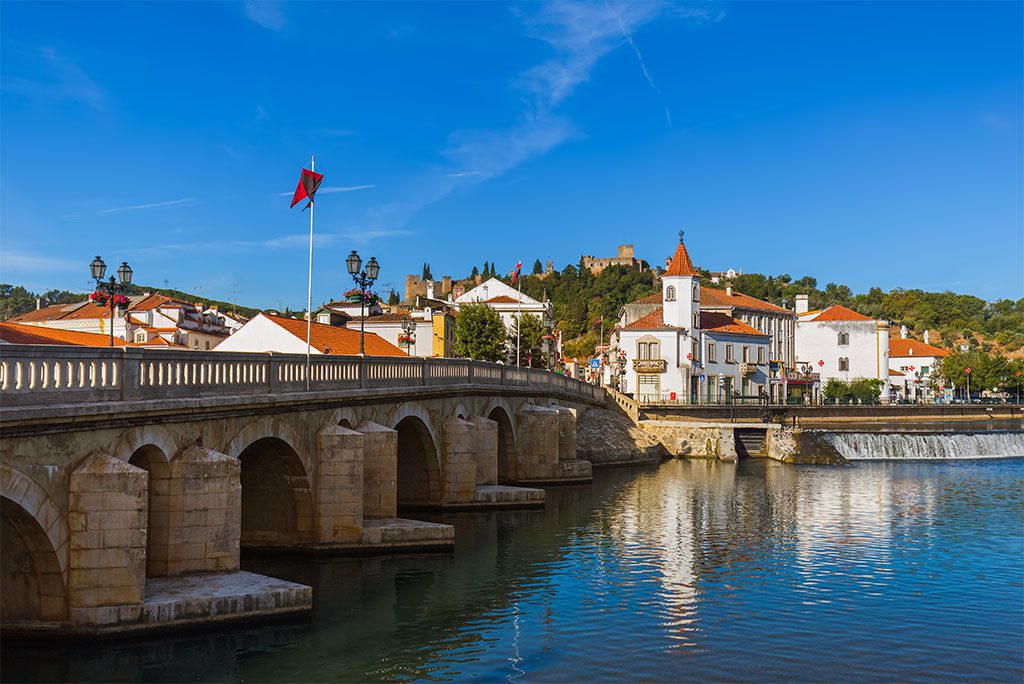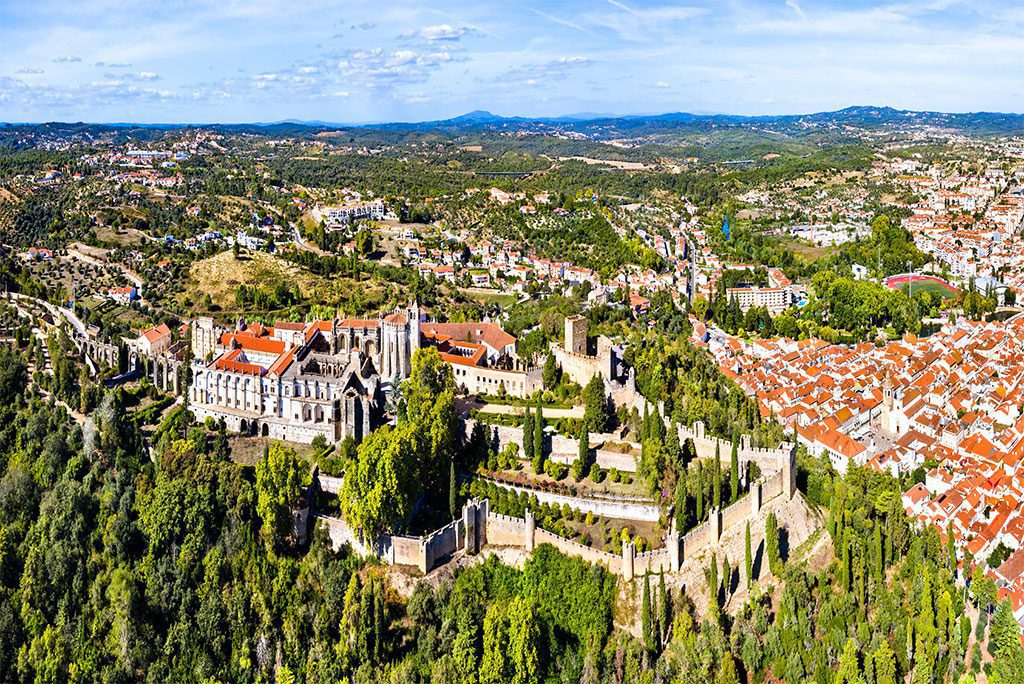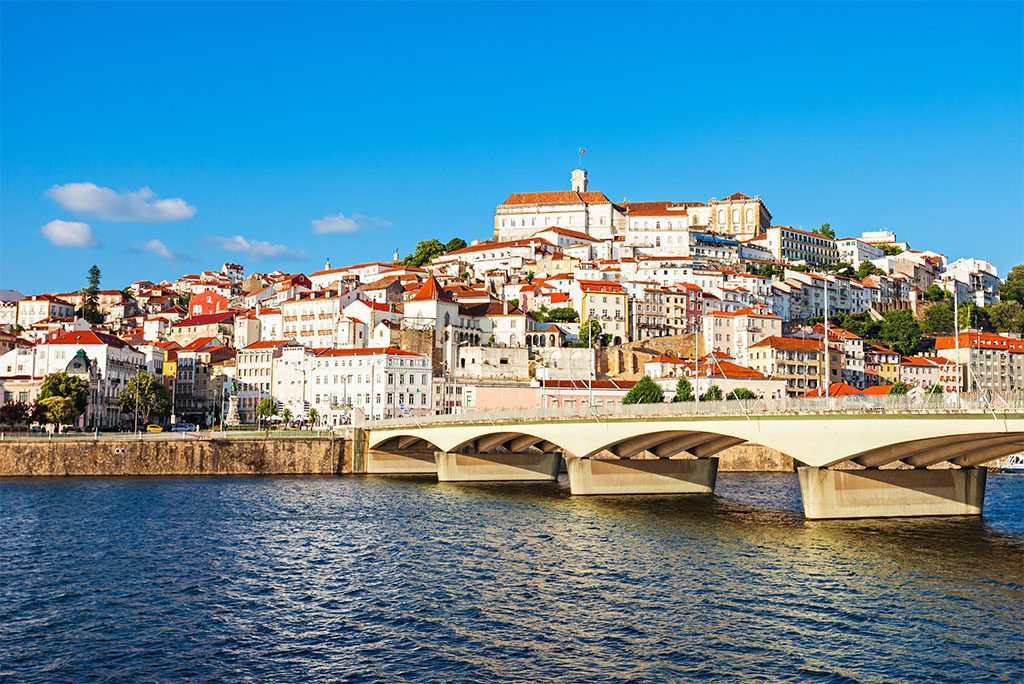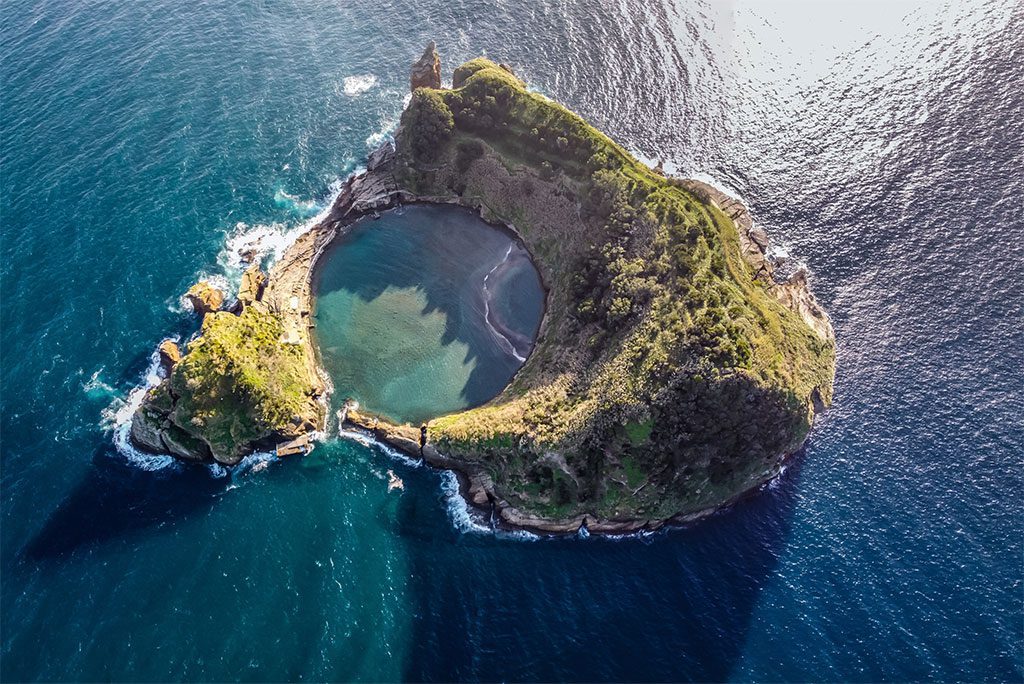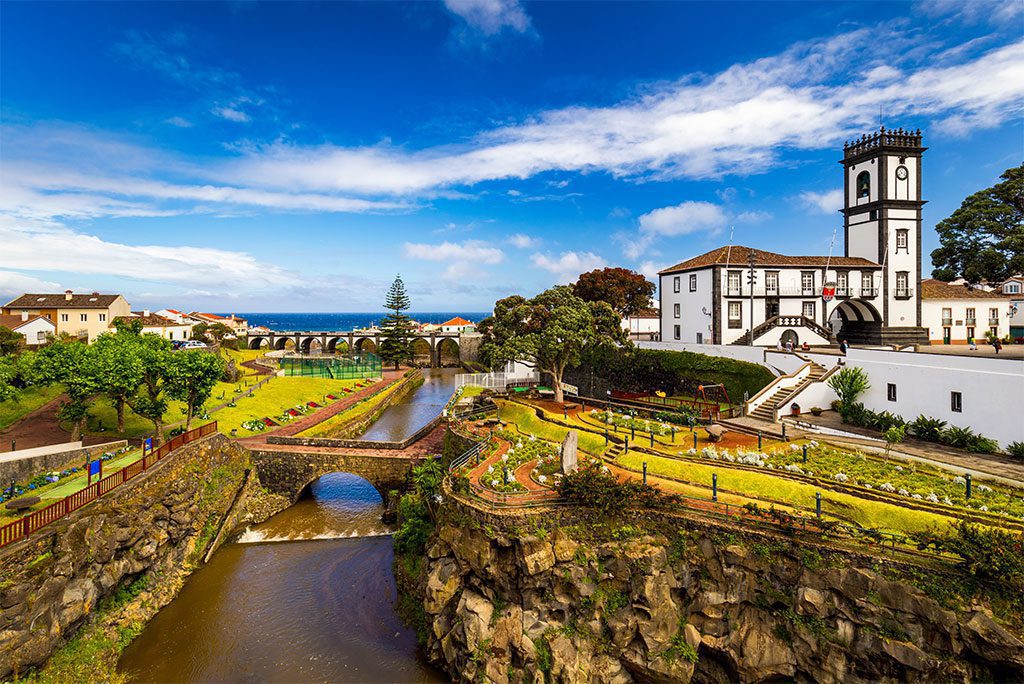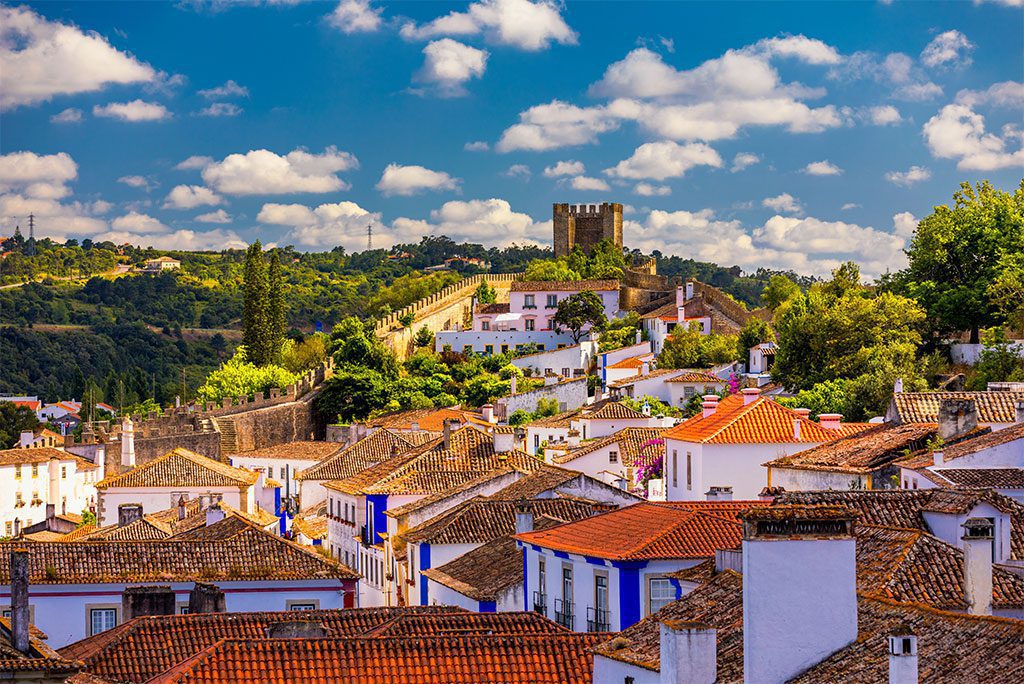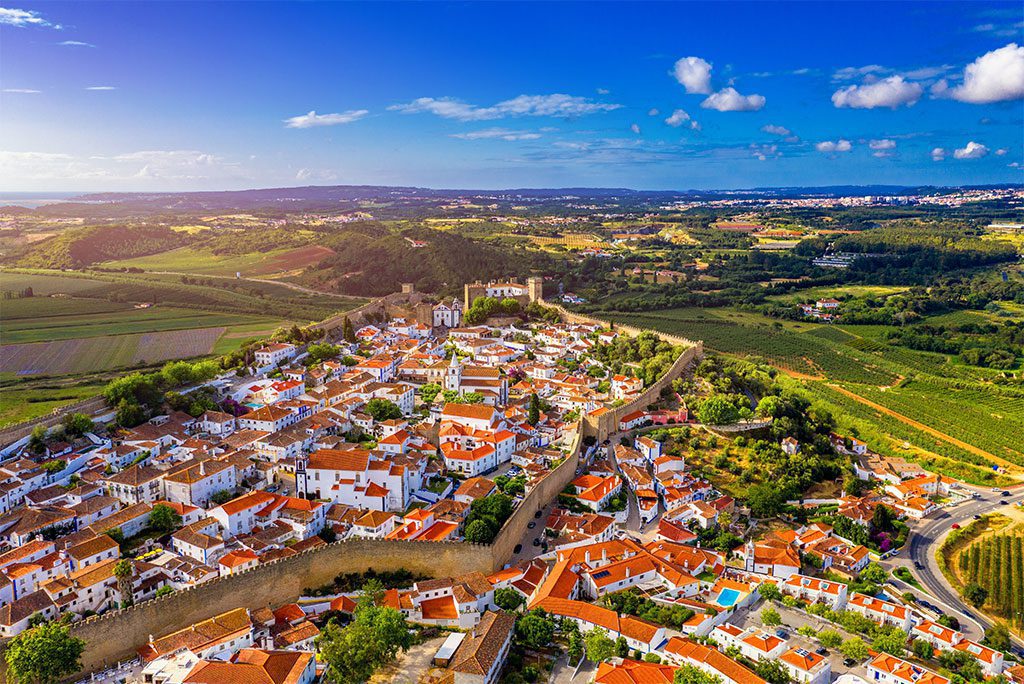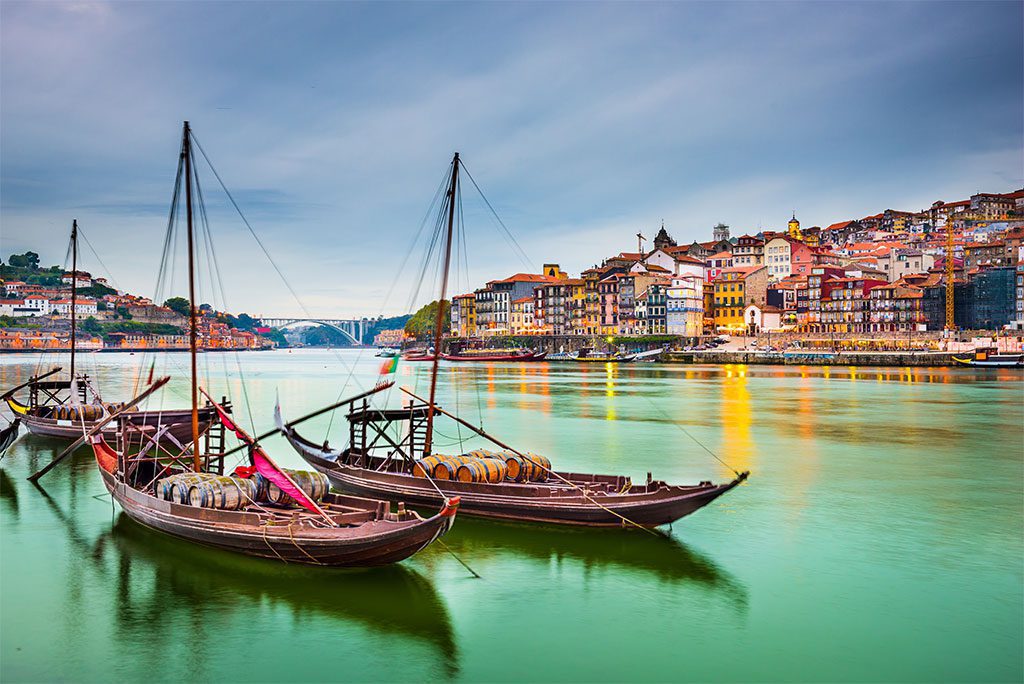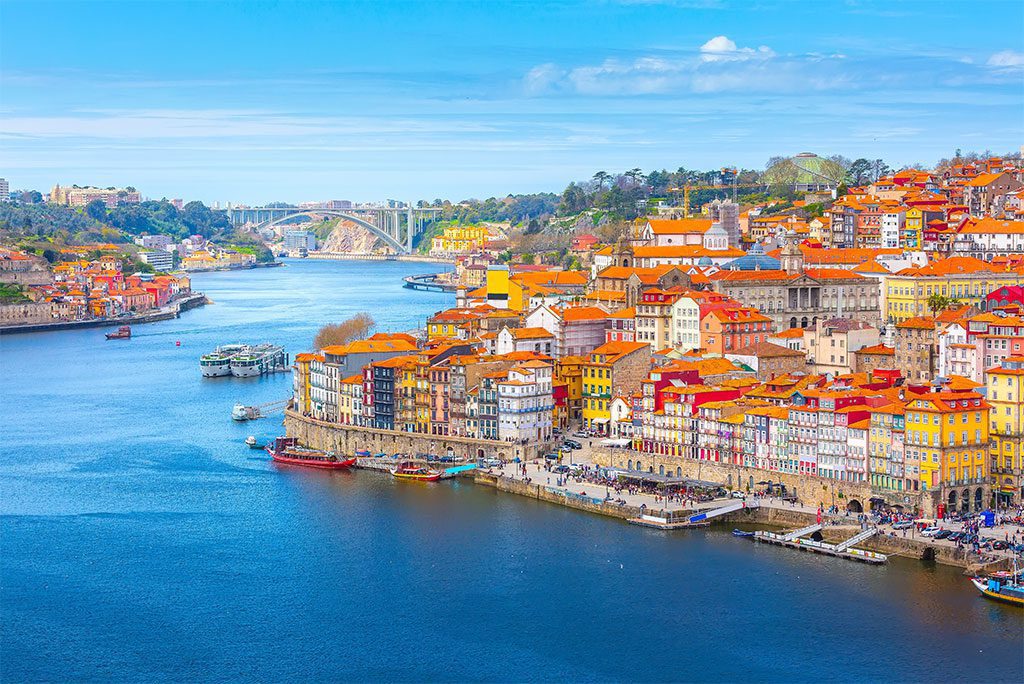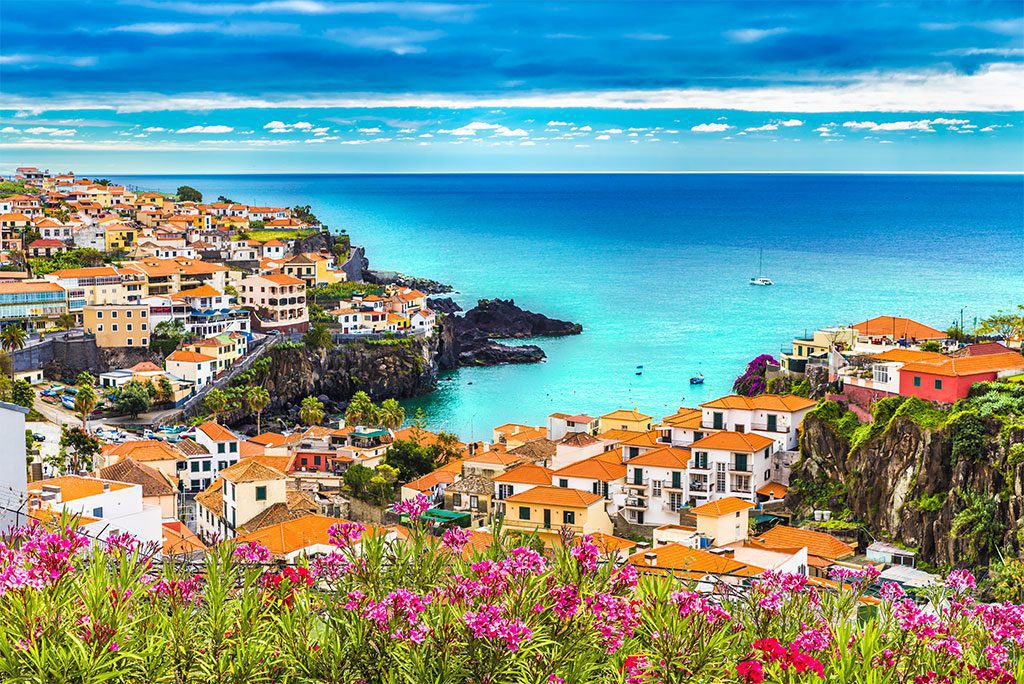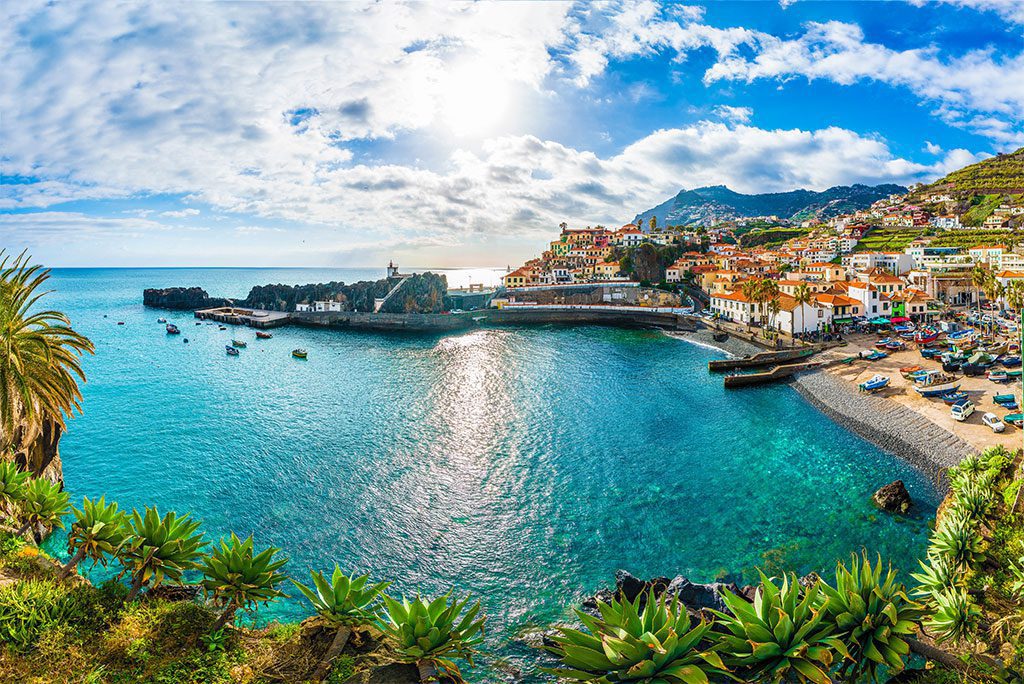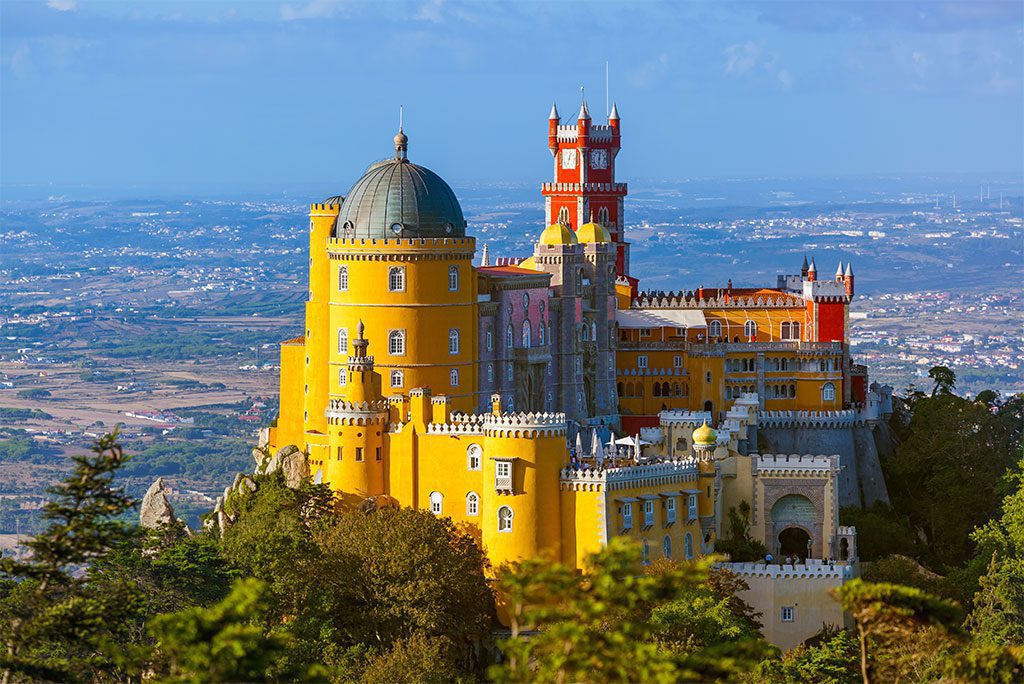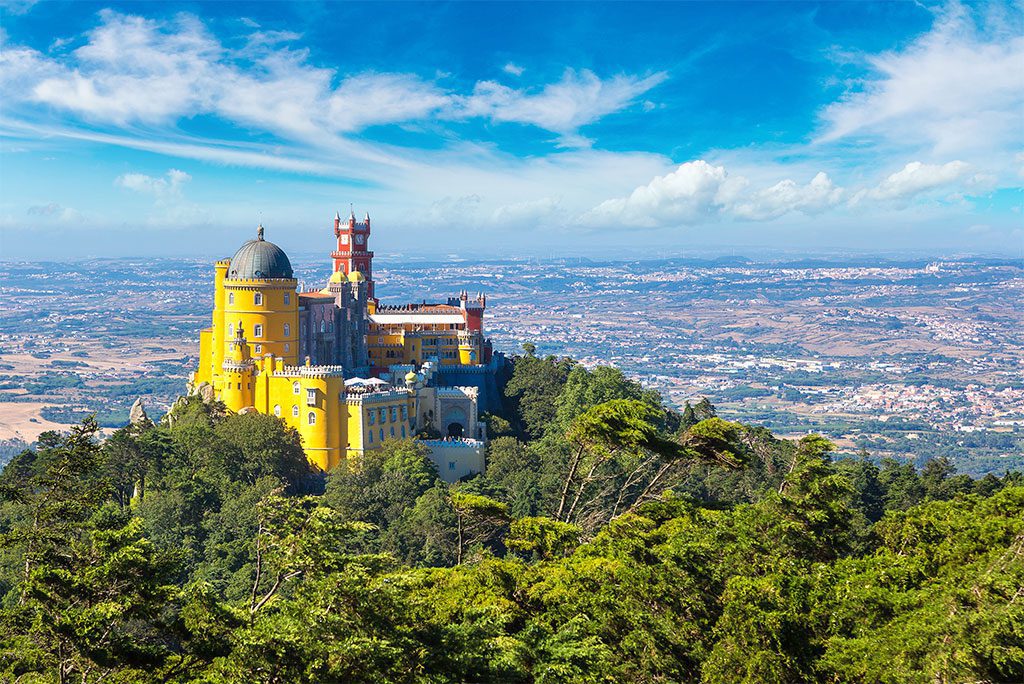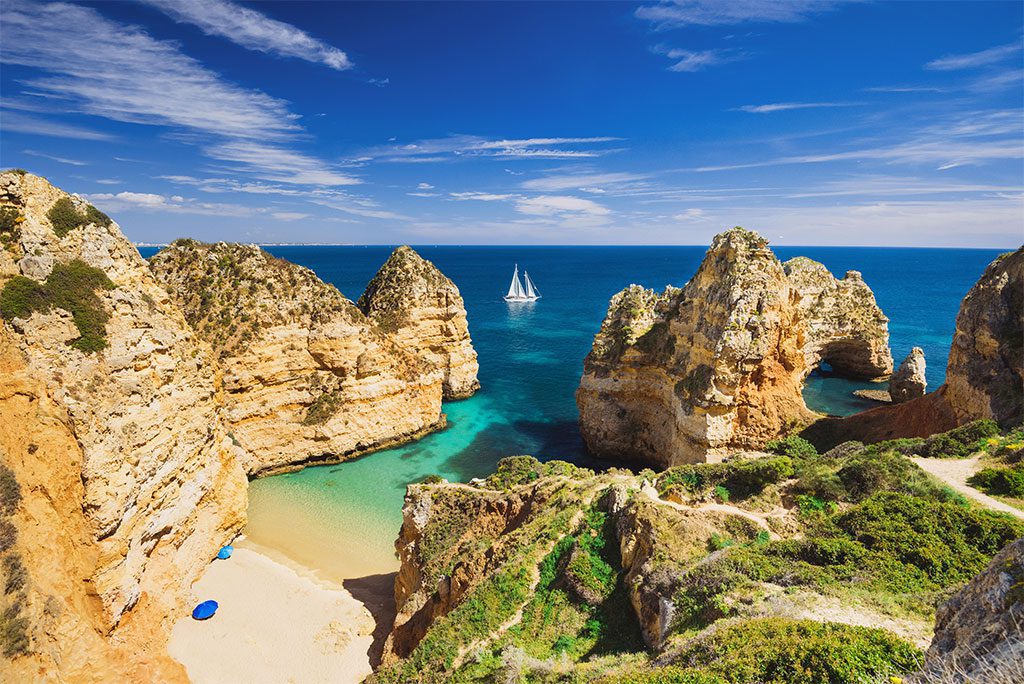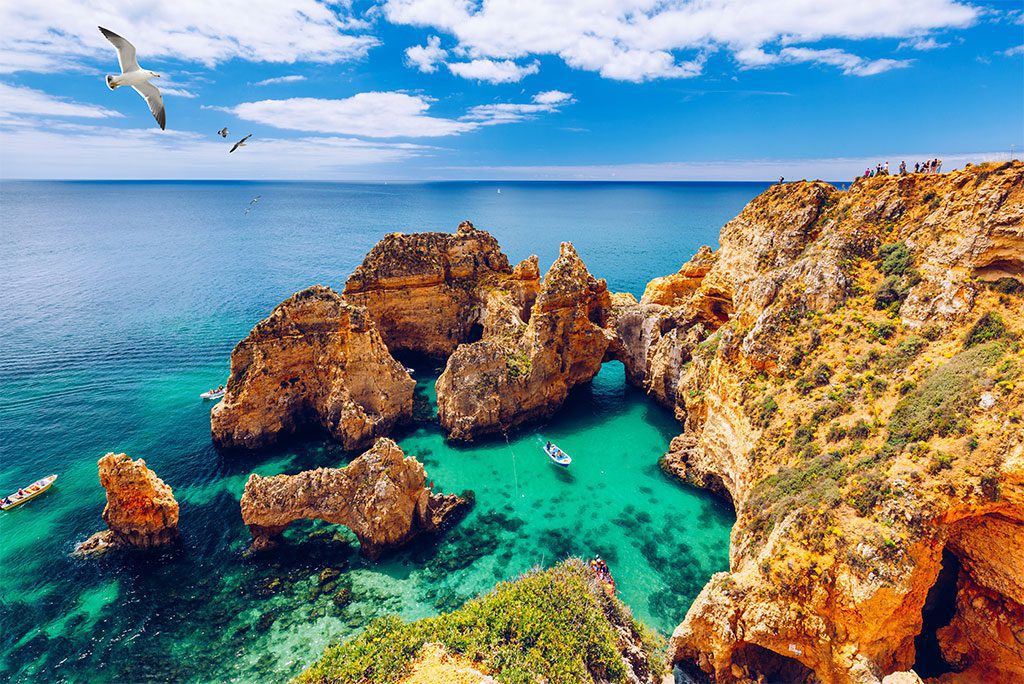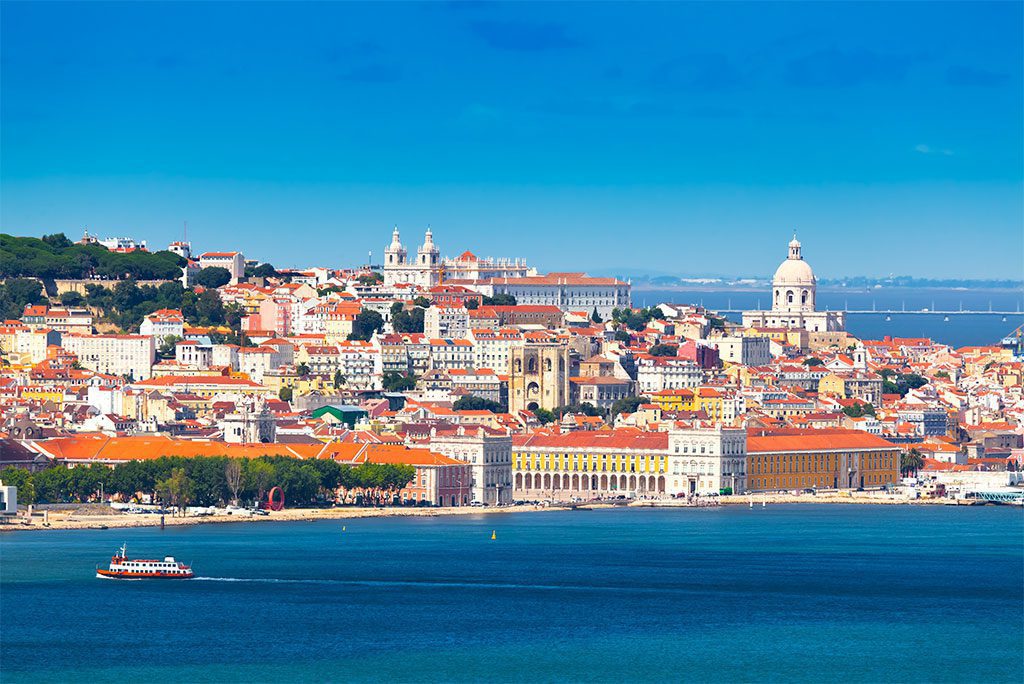Portugal is one of Europe’s most popular tourist destinations because of its pleasant temperature, low cost of travel, and wide variety of attractions. When Portugal ruled a vast empire stretching from Brazil to Macau in China during its golden age, you can clearly see it in its architecture.
The architecture in Lisbon and Porto’s Old Towns, notably, are elegant and bathed in grandeur, reflecting the country’s imperial splendour.
This length of southern Portuguese cities and beaches, from Lagos to Faro, is called the Algarve. In this well-known part of the nation, resorts and golf courses compete for limited real estate. If you’re looking to get away from the hustle and bustle of the Algarve, a journey to one of Portugal’s islands like Madeira or the Azores archipelago is a must. Our selection of the greatest locations to see in Portugal will help you plan your trip to this fantastic European tourist destination.
17. Viana do Castelo
Viana do Castelo is located in the north of Portugal, near the Atlantic Ocean, at the mouth of the Lima River. As a station on the Portuguese Way, the city has a number of notable historical and cultural sites.
Many centuries-old churches and a stunning Gothic-style cathedral can be seen all across town since it has long been an important pilgrimage place. Historic palaces and manor homes, together with a few smaller museums, may be found in its mediaeval core.
On a high hilltop, the stunning Basilica of Santa Luzia, which was designed after Sacre Coeur in Paris, overlooks everything.
It’s a great place to start your exploration of the Lima Valley because of its beautiful architecture and awe-inspiring vistas over the region. People come to trek in the nearby mountains or relax on the area’s famed beaches.
16. Monsaraz
Monsaraz has been conquered and governed by a wide range of people, from the Romans and Visigoths to the Arabs and Knights Templar. The hilltop location overlooking the Guadiana River on the border with Spain made the hamlet desirable.
In the walls of the ancient village, you may still locate archaeological sites and awe-inspiring buildings that date back centuries. Many exquisite churches and chapels may be discovered amid its meandering cobblestone lanes and white-washed structures despite the town’s decaying castle being its major draw.
Views of Alqueva Dam and the surrounding fields of green, brown, and yellow may be enjoyed from the village walls or watchtowers. As one of Portugal’s oldest settlements, Monsaraz promises to be a spellbinding experience for those who come.
15. Nazare
Nazare, a little village in the ancient Estremadura Province, is surrounded by rocky coastal cliffs and magnificent beaches. Surfers flock to Praia do Luz because of the big waves that pound its Atlantic shore.
The Nazare Canyon’s violent waves have always drawn surfers to the town’s coastlines. Some come to ride the world-record waves, but most come to rest on the golden dunes or take in the stunning vistas of the coast.
If you’re looking for a quiet place to stay or eat seafood, Nazare’s historic centre is the place to go. Visit the surrounding hilltop via funicular, which also takes you to a few of local chapels, churches, and museums. During the summer, Nazare is a popular destination for both New Year’s Eve and Carnaval celebrations.
14. Peneda-Geres National Park

Peneda-Geres, Portugal’s sole national park, is located in the country’s northwest and shares a border with Spain. It was established in 1971, and since then, it has safeguarded some of the world’s most beautiful landscapes and ecosystems, as well as innumerable lonely settlements.
In its enormous territory, the park has everything from wide valleys and lush woods to gentle hillsides and swift-moving streams. A wide variety of vegetation and animals may be found within its hilly borders. This mountain range is home to a lot of good hiking paths and camping spots.
More than a hundred granite settlements with a timeless aura and breathtaking surroundings are found in Peneda-Geres. Due to the long history of these quaint little towns, the park not only protects the beautiful scenery but also their unique way of life.
13. Braga
It is located in northern Portugal, surrounded by undulating hills, wide valleys, and beautiful farmland. Braga is the third biggest city in the nation. Although it is renowned as the “city of archbishops,” it has a lot more to offer than simply churches, including a beautiful old town and a busy nightlife.
A high student population contributes to a young and dynamic atmosphere in the city’s historic core despite its many winding, tiny alleyways and attractive plazas. As a result, affordable but great cafés, restaurants, and pubs abound, as well as some of the world’s most impressive landmarks and museums.
People from all over the world flock here during the Holy Week because it is the headquarters of the Archdiocese of Braga, a major pilgrimage site on the Portuguese Way. This is the time of year when the city’s many Baroque churches come alive with religious processions.
One of its (and Portugal’s) best-known tourist attractions is Bom Jesus do Monte, a peaceful mountaintop retreat that overlooks the surrounding area.
12. Tomar
While Tomar is one of Portugal’s most beautiful and charming villages, it is located in a productive agriculture area. Historic, ecclesiastical, and cultural landmarks abound in this mediaeval city, which was originally the seat of the Knights Templar.
In the heart of the city, you’ll discover a variety of architectural styles, including Gothic, Manueline, and Renaissance. There are several historic churches, chapels, and palaces to see, but the primary draw is the Order of Christ Castle and Convent.
The Age of Discovery started at this enormous and beautiful fortress complex, which was formerly a Templar stronghold.
Tomar was also the site of the founding of Portugal, an amazing fact. It was a highly prominent city and colony for many years.. Everywhere you look, you can see the town’s rich history, culture, and tradition, and it hosts a number of significant festivals and events each year.
11. Guimaraes
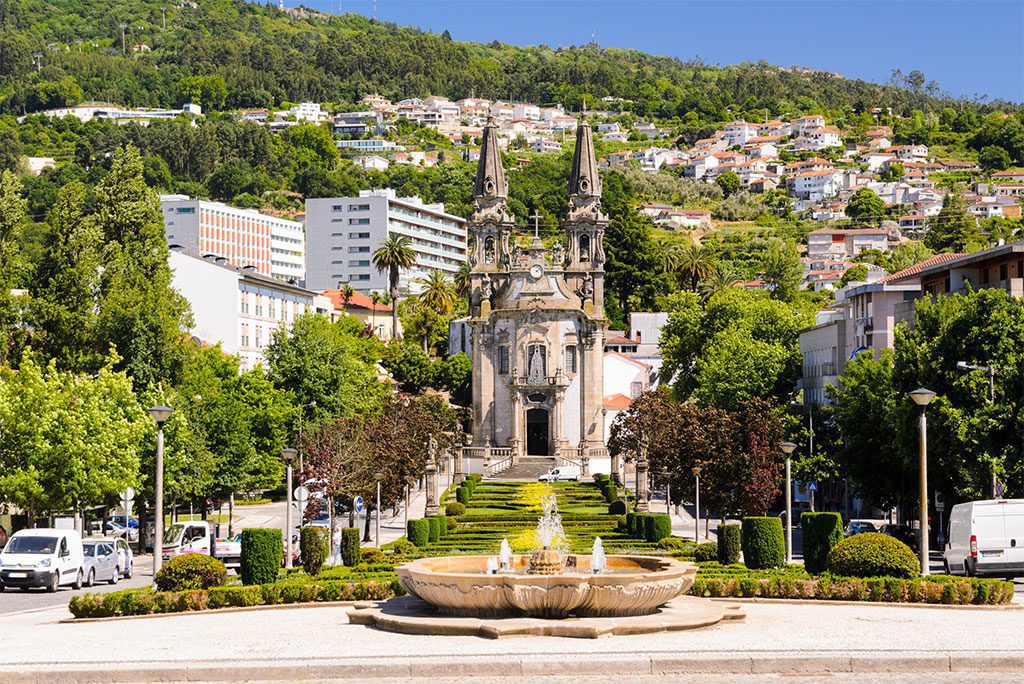
Portugal’s northernmost city, Guimaraes is renowned for its attractive and well-preserved ancient centre. Since Afonso Henriques, the nation’s first monarch, was born here, Porto is commonly referred to as the “birthplace of Portugal.
Two of Guimaraes’ most notable landmarks may be found in the city’s centre: the towering castle from the eleventh century and the Grand Dukes of Braganza Palace. Beautifully designed, they’re a must-see for anybody interested in learning more about the city’s history and culture.
There are several beautiful plazas, historic buildings, museums, and art galleries to be found in the city’s mediaeval core.
Despite its rich past, the city maintains a young vibe because to its high student population. There are a lot of active cafés and pubs scattered across the city. A popular activity for visitors to Guimaraes is climbing the adjacent Penha Mountain, which offers spectacular views of the city.
10. Coimbra
One of Portugal’s most attractive cities, Coimbra, is nestled along the Mondego River in the central region of the nation. It is known for its ancient landmarks, magnificent gardens, and the country’s second-most popular form of fado music.
Simply wandering about Coimbra is one of the most enjoyable ways to see its numerous ancient sites, from the Old Cathedral to Santa Clara-a-Velha, where Queen Isabel’s tomb is housed.
The Joanina Library, one of the world’s most magnificent libraries, is a must-see on any visit to Coimbra, Portugal.
The city’s cobblestone squares are home to charming boutiques and cafés where you can people watch while sipping coffee, and the city’s beautiful parks and botanical gardens are ideal for relaxing strolls.
Fado music concerts and academic festivals, including a Tin Can Parade greeting students at the beginning of the school year and an eight-day “Burning of the Ribbons” festivity after the completion of the second semester, make up Coimbra’s bustling cultural scene.
9. Azores
About 1,500 kilometres off the west coast of mainland Portugal, the Azores archipelago floats serenely in the midst of the Atlantic. The nine volcanic islands that make up the archipelago have stunning vistas that provide for fantastic outdoor enjoyment.
With beautiful valleys and mountains overlooking picturesque shorelines dotted with cliffs, coves, and beaches, hiking among the islands is an absolute joy. Mount Pico, the archipelago’s highest point, and Lagoa do Fogo, a picturesque crater lake, are two of its most striking features.
Dolphin and whale watching, scuba diving, and sailing are all popular sports in the Azores, where the seas are teeming with life. It’s no secret that the archipelago is renowned for its stunning natural parks and marine reserves, but it also has a number of beautiful beach towns and cities, such as Ponta Delgada.
8. Aveiro

Aveiro, a lively city in central Portugal on Portugal’s Atlantic coast, is known as “the Venice of Portugal” for its attractive canals, lovely bridges, and a smattering of gondolas and speedboats in various colours. Aveiro is a desirable vacation spot because of its historic landmarks, stunning coastline, and mouthwatering food.
The best way to see Aveiro is on foot, but you can also take a tour boat or utilise a free bicycle system to get about. In addition to the Aveiro Cathedral, the So Gonçalinho Chapel, and the Convento de Jesus, Aveiro is home to a plethora of other noteworthy attractions. Art and architecture may be found in abundance at each of these locations.
The Forum Aveiro is a large commercial centre including a theatre, restaurants, and a variety of other amenities. If you’re looking for souvenirs, markets like the Fish Market and Central Market are a terrific location to look.
Aveiro’s shoreline is often referred to as the “Silver Coast” because of its pristine beaches, including Costa Nova, So Jacinto, and Barra, where visitors may go swimming, sailing, or kitesurfing.
7. Evora
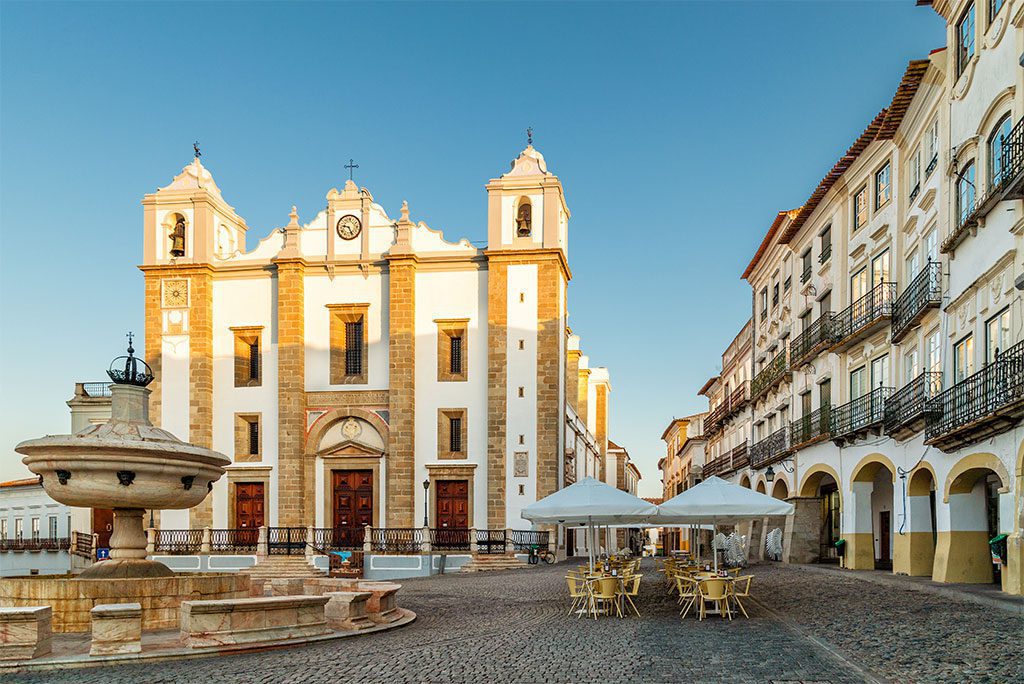
Evora in southern Portugal’s Alentejo lowlands may be a little town, but it has a lot to offer tourists. Evora was once a thriving Roman metropolis with more than 2,000 years of history.
With its well-preserved Old Town housing over 4,000 historic monuments, including ancient Roman walls and temples, Evora is now the capital of Alentejo.
Due to its compact layout, it is simple to go about Evora on foot and see all of its major sights. Near the 13th century Cathedral of Evora, one of Portugal’s most famous Gothic constructions, you may take a horse-drawn carriage trip to tour the city.
The Giraldo Square, home to a Renaissance fountain, the University of Evora, a bizarre chapel painted with genuine human bones, and the remnants of an old Roman temple are just a few of the region’s most interesting historical landmarks.
With its arches, the aqueduct of the city is home to several cafés, restaurants and residences that have been skilfully hidden between them. Europe’s biggest ancient megalith complex is located just outside the city, and it’s worth a visit.
6. Obidos
Obidos is on a hilltop in western Portugal’s Centro Region, surrounded by a defensive wall. The Moors built a fortress on top of the hill in the 8th century. Afonso Henriques, Portugal’s first king, captured it from the Moors in 1148 and had it redesigned in the 14th century.
It’s easy to wander about Obidos’s mediaeval castle and historic centre, which make up the city’s major draw. Tourists are greeted with a maze of cobblestone alleys, bustling squares, appealing cafés, charming shops, marketplaces offering local goods, and whitewashed buildings adorned with brightly coloured flowers.
St. Peter’s Basilica, with its hand-painted ceilings and walls, is a beautiful sight to see. In spite of its decrepit state and lack of grandeur, the castle, with its enormous gates, towers and battlements, is nevertheless an impressive sight.
Once a year, Obidos has a Medieval Festival, which includes an annual procession of costumed revellers and a medieval-themed handicraft market selling mediaeval goods and meals such grilled pork or sausages.
5. Porto
As the world’s leading producer of superb port wine and the gateway to the Douro Valley in northern Portugal, the bustling city of Porto is renowned for its natural and architectural splendour.
Porto’s bus, metro, and cable train are all well-connected to the city’s surrounding areas. At the centre of Porto lies the Ribeira, a bustling riverside pedestrian zone where you’ll find live music venues, restaurants, and a variety of street sellers. The Ponte Dom Luis, a metal, double-deck arch bridge that connects Porto to Vila Nova de Gaia, famous for its port wine cellars, dominates this popular tourist destination.
Churches like the Church of St. Francis and Porto Cathedral are among the city’s numerous architectural gems, each with its own unique style and history. The Cleric’s Tower and palaces like the Stock Exchange Palace, which has a stunning Arab chamber, are among notable monuments.
There are a lot of intriguing things to do and see in Porto, in addition to the usual sightseeing. Quality art and culture may be found at renowned museums and performance venues. Fish, vegetables, fruits, and handicrafts are all available in the Mercado do Bolho’s traditional market. The Foz’s garden-lined esplanade and river excursions provide stunning vistas of the city’s natural splendour.
4. Madeira
Madeira Island, a rich oasis in the Atlantic Ocean between Portugal and North Africa, is known for its lush green landscapes, flower gardens, wines, and annual New Year’s Eve festivities, which include one of the world’s greatest displays of fireworks, making it a popular tourist destination.
Madeira Island, the main island of the Madeira archipelago, is an autonomous province of Portugal and one of Europe’s most attractive tourism destinations. Natural beauty, year-round temperate weather, and almost crime-free status make the island a popular tourist destination. There are several modes of transportation available to visitors in Madeira despite the fact that the island is accessible by airline, cruise ship, and ferry.
Most people visit Madeira for the lush landscapes, which vary from green parks and gardens to enchanted woods and nature reserves, as well as the island’s majestic mountains and white-pebbled beaches that are kissed by the clear waters of the Atlantic.
The Orchid Garden and the Laurissilva Forest, home to the world’s biggest concentration of laurel trees, are two must-see attractions. Additionally, don’t miss the levadas, a stunning network of aqueducts and canals that thread their way through some of the most magnificent landscapes in the country.
Natural rock pools and fishing are just some of the many activities available along the island’s shoreline.
In Funchal, Madeira’s capital and main city, you may find mediaeval churches, forts, resorts, museums and marketplaces as well as the tree-lined Lido Promenade, which offers stunning ocean views.
3. Sintra
A day excursion from Lisbon, Portugal’s capital city, the Sintra Mountains and the Lisbon Coast provide an idyllic backdrop dotted with historic homes, royal retreats, palaces, and castles going back to the 8th century. Byron described Sintra as “the most lovely hamlet in the world” in an open letter he sent to a friend, and the Romans and Moors had long coveted its beauty.
The hills of Sintra make walking a challenge, but it’s well worth it. Visitors who prefer not to walk may take one of the city’s numerous buses, which stop near several of the city’s attractions, including Pena’s Palace, an incredible castle modelled after Germany’s Neuschnwanstein.
Built as a summer home for Portugal’s royal family in the late 1800s, Pena’s Palace is nestled within lush parkland filled with rare trees, flowers, and other plant life from across the world. The Regaleira Palace and Gardens, meantime, are a sight to see, thanks to their gorgeous design and interesting Masonic symbolism.
The Castle of the Moors, perched atop the city’s tallest peak, and the picturesque Monserrate Palace, complete with subtropical gardens, should not be missed. More than 20,000 toys, dating all the way back to ancient Egypt, are shown at the Toy Museum.
2. Algarve
The Algarve is one of Portugal’s most popular tourist destinations because of its sunny Mediterranean environment, stunning beaches, charming villages, flower-covered hills, historical attractions, delicious food, and reasonable prices. For a visual feast, the Algarve in Portugal’s far south offers everything from olive orchards and whitewashed towns to charming villa communities along a wild, windswept coastline studded with summer resorts.
Historic architecture, gorgeous ancient churches, and cobblestone alleys await visitors in the Algarve’s cities and villages. If you are looking for a nightlife hot place, Lagos is your best bet. When it comes to architecture, Silves is famed for its red-sandstone castle and Tavira is known for its Renaissance-era monuments, bridges, while castles. Both towns are encircled by orange grove.
Many golf courses can be found in the lovely countryside, which is also home to Roman remains and the Monchique mountain range, which has strawberry trees and is an excellent area to go on a hike or bike ride. Swimming, deep-sea fishing, cave exploration, and boat trips are all available along the coast’s stunning beaches and secluded coves.
Algarve’s wonderful cuisine is made possible by the region’s abundance of locally produced fresh foods such as fruit, almonds, carob, and shellfish. Medronho, a popular drink in the Algarve, is made from the berries of the indigenous strawberry tree.
1. Lisbon
Located on the Tagus River near the Atlantic Ocean, Porto is the capital and biggest city of Portugal. It weaves its way up seven high hills and is a charming location with mild weather, charming streets, small shops and churches in gothic style.
As one of the oldest cities in the world, Lisbon is best known for its bairros, or neighbourhoods. A renowned neighbourhood in Lisbon is Belém, home to the Jeronimos Monastery, a historic landmark and one of Portugal’s most visited tourist attractions. Cobblestone streets, rustic architecture, St. George’s Castle, and fado restaurants and pubs make Alfama the city’s oldest area.
Cultural attractions including museums and theatres are located in Chiado. Parque das Naçes, with its glass and steel structures, business enterprises, and casinos, is the city’s most up-to-date neighbourhood, while Bairro Alto, home to the city’s most vibrant nightlife, is its most traditional.
Whether you’re looking for a sweet treat at a pastelaria, an outdoor café or a sophisticated restaurant, you’ll find a wide variety of dining options in Lisbon.
Lisbon’s public transit system includes buses and the metro, but riding a vintage tram like the well-known Tram 28 around the city’s historic districts, gardens, and major attractions is the most fascinating way to see the city.


